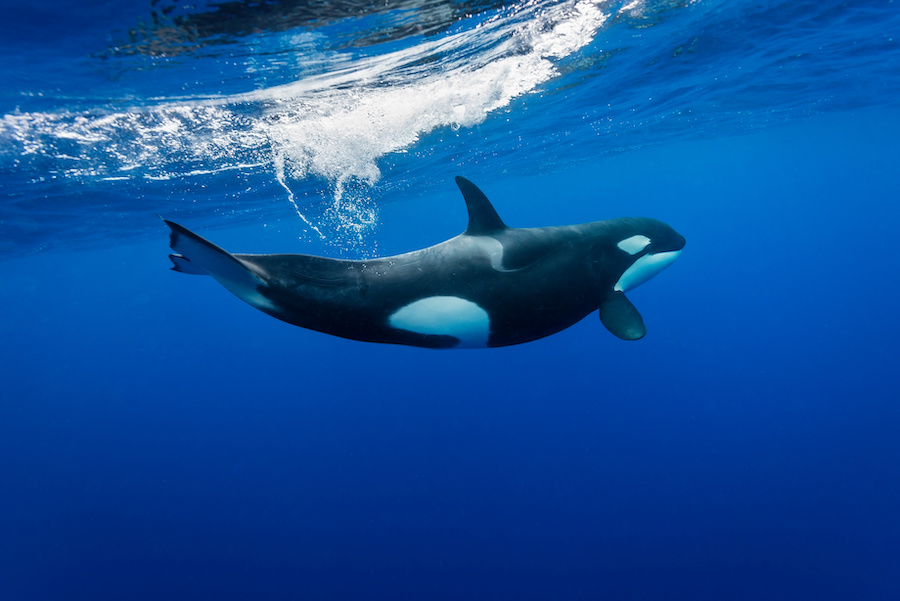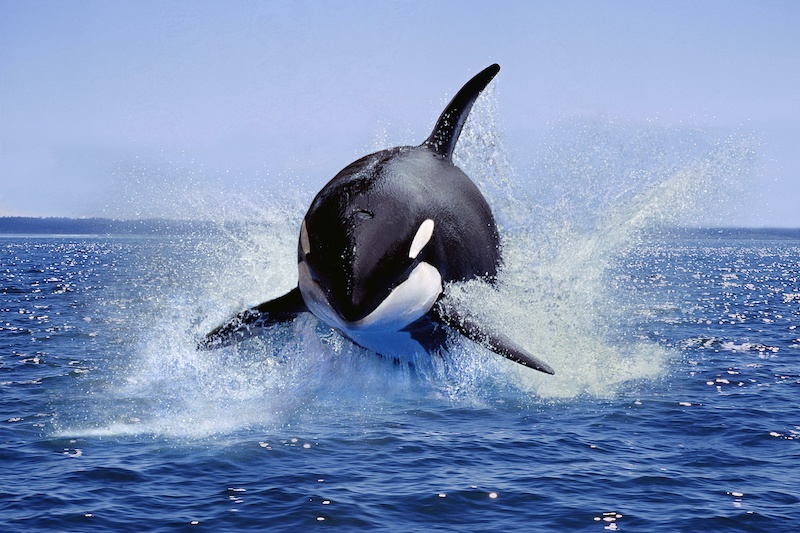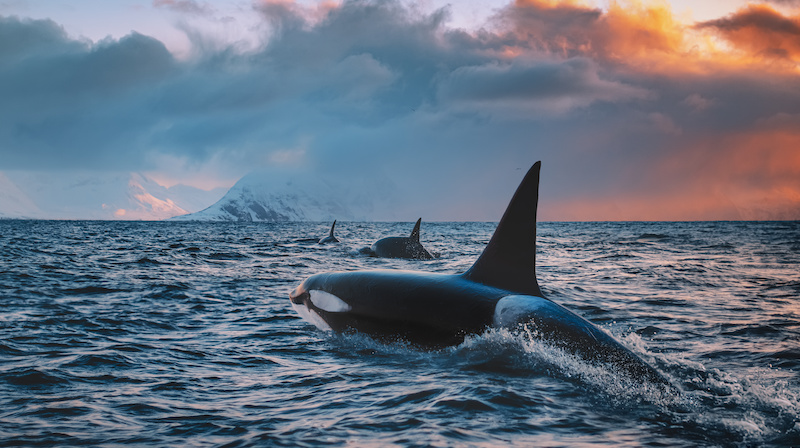
The Caribbean orcas continue to captivate scientists and marine life enthusiasts. Their intelligence, social organization, and ability to adapt to different environments make them one of the most remarkable creatures on our planet. By learning more about them, we can better appreciate and protect these incredible animals.
Characteristics of the Orca
Orcas, scientifically known as Orcinus orca, are among the most fascinating and powerful predators in the oceans. Belonging to the suborder Odontoceti, or toothed whales, they are also the largest members of the dolphin family. Morphologically, these marine mammals are distinguished by their imposing size and contrasting coloration, blending deep black and bright white. Males, significantly larger than females, can reach a length of 8 meters and weigh up to 6 tons, while females measure around 6 meters with a weight of 3 to 4 tons. Their dorsal fin is a distinctive feature, particularly imposing in males, reaching up to 1.8 meters in height.
These mammals impress with their speed, reaching up to 56 km/h, classifying them among the fastest swimmers in the animal kingdom. In terms of longevity, orcas can live up to 50-60 years, with females generally having a longer lifespan than males. Their intelligence and complex social behavior are of growing interest, as orcas use sophisticated hunting techniques and establish strong social bonds within their groups, known as pods. These remarkable characteristics make orcas both fascinating and iconic creatures of the world’s oceans.

Habitat of the Orca
Orcas are highly adaptable marine mammals and can be found in almost all the oceans and seas worldwide, from the icy waters of the Arctic and Antarctic to the warmer tropical regions, including the Caribbean waters. They do not have a fixed residence, meaning they can be observed in diverse environments, from shallow coasts to the abyssal depths of open oceans. This great adaptability is due to their ability to hunt various prey in different marine environments.
Caribbean orcas, in particular, frequent temperate to warm waters, rich in biodiversity, providing an abundance of food. Their presence in these waters underscores the importance of these regions as key habitats for marine biodiversity. The conservation of these habitats is crucial for maintaining orca populations and the marine ecosystem as a whole.
Reproduction in the Orca
The reproduction of orcas is a complex and intriguing process, marked by unique characteristics. Females reach sexual maturity between 10 and 13 years, while males only become sexually mature around the age of 15 or later. The mating season is not strictly defined, as orcas can reproduce at any time of the year, although some seasonal trends may be observed depending on the region.
Gestation lasts about 17 months, a relatively long period compared to other marine mammals. A female orca gives birth to a single calf at a time, and the period between births is usually three to ten years, contributing to a relatively low birth rate. Young orcas stay with their mother for several years, learning essential survival skills. This extended learning period highlights the importance of social structure and close family bonds within orca pods, features that are crucial for the species’ survival and prosperity.

Diet of the Orcinus orca
The diet of orcas is varied and adapts to their environment, making them among the most versatile and effective predators in the oceans. These apex predators can consume daily up to 3% of their body weight, which is approximately 100 kg of food for an adult individual. Their diet primarily consists of fish, including large species such as salmon, tuna, and sharks. They also hunt other marine mammals, such as seals, sea lions, dolphins, and even other large cetaceans.
In some regions, orcas specialize in hunting seabirds or turtles. Their hunting techniques are sophisticated and often elaborately coordinated collectively, demonstrating their intelligence and ability to coordinate actions. Orcas adapt their diet based on food availability, showing great flexibility and remarkable adaptability to different marine ecosystems.
Discover all the species of cetaceans that can be found near the coasts of Martinique: